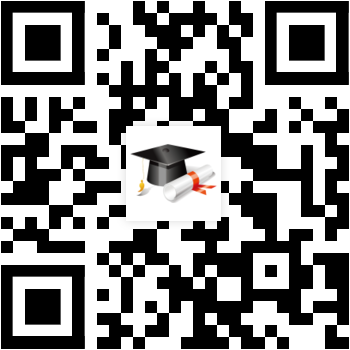2012年四川大学考博英语真题及答案(一)
在职博士考试都是院校自主命题的,因此考生在备考的时候也需要参考申请院校的备考资料,对于历年真题,考生也是不能放过。考生对真题要好好的研究,推敲出院校的出题重点,然后在进行针对性的备考。下面是在职研究生网的招生老师汇总的四川大学在职博士2012年考博英语真题及答案,希望给考生带来一定的帮助。
阅读
1)Sign has become a scientific hot button. Only in the past 20 years have specialists in language study realized that signed languages are unique—a speech of the hand. They offer a new way to probe how the brain generates and understands language, and throw new light on an old scientific controversy: whether language, complete with grammar, is something that we are born With, or whether it is a learned behavior. The current interest in sign language has roots in the pioneering work of one rebel teacher at GallaudetUniversityin Washington, D. C., the world’s only liberal arts university for deaf people.
When Bill Stokoe went to Gallaudet to teach English, the school enrolled him in a course in signing. But Stokoe noticed something odd: among themselves, students signed differently from his classroom teacher.
Stokoe had been taught a sort of gestural code, each movement of the hands representing a word in English. At the time, American Sign Language (ASL) was thought to be no more than a form of pidgin English (混杂英语). But Stokoe believed the “hand talk” his students used looked richer. He wondered: Might deaf people actually: have a genuine language? And could that language be unlike any other on Earth? It was 1955, when even deaf people dismissed their signing as “substandard”. Stokoe’s idea was academic heresy (异端邪说).
It is 37 years later. Stokoe—now devoting his time to writing and editing books and journals and to producing video materials on ASL and the deaf culture—is having lunch at a cafe near the Gallaudet campus and explaining how he started a revolution. For decades educators fought his idea that signed languages are natural languages like English, French and Japanese. They assumed language must be based on speech, the modulation (调节) of sound. But sign language is based on the movement of hands, the modulation of space. “What I said,” Stokoe explains, “is that language is not mouth stuff—it’s brain stuff.”
21. The study of sign language is thought to be _____C___.
A) a new way to look at the learning of language
B) a challenge to traditional, views on the nature of language
C) an approach: to simplifying the grammatical structure of a language
D) an attempt to clarify misunderstanding about the origin of language(C)
22. The, present growing interest in sign language was stimulated by ___C_____.
A) a famous scholar in the study of the human brain
B) a leading specialist in the study of liberal arts
C) an English teacher in a university for the deaf
D) some senior experts in American Sign Language(C)
23. According to Stokoe, sign language is _____B___.
A) a Substandard language
B) a genuine language
C) an artificial language
D) an international language(B)
24. Most educators objected to Stokoe’s idea because they thought _____D___.
A) sign language was not extensively used even by deaf people
B) sign language was too artificial to be widely accepted
C) a language should be easy to use and understand
D) a language could only exist in the form of speech sounds(D)
25. Stokoe’s argument is based on his belief that ____D____.
A) sign language is as efficient as any other language
B) sign language is derived from natural language
C) language is a system of meaningful codes
D) language is a product of the brain(D)
2)It was the worst tragedy in maritime history, six times more deadly than the Titanic. When the German cruise ship Wilhelm Gustloff was hit by torpedoes fired from a Russian submarine in the final winter of World War II, more than 10,000 people-mostly women, children and old people fleeing the final Red Army push into NaziGermany-were packed aboard. An ice storm had turned the decks into frozen sheets that sent hundreds of families sliding into the sea as the ship tilted and began to go down. Others desperately tried to put lifeboats down. Some who succeeded fought off those in the water who had the strength to try to claw their way aboard. Most people froze immediately. I’ll never forget the screams,” says Christa Ntitzmann, 87, one of the 1,200 survivors. She recalls watching the ship, brightly lit, slipping into its dark grave-and into seeming nothingness, rarely mentioned for more than half a century.
NowGermany’s Nobel Prize-winning author Gtinter Grass has revived the memory of the 9,000 dead, including more than 4,000 children-with his latest novel Crab Walk, published last month. The book, which will be out in English next year, doesn’t dwell on the sinking; its heroine is a pregnant young woman who survives the catastrophe only to say later: “Nobody wanted to hear about it, not here in the West (ofGermany) and not at all in the East.” The reason was obvious. As Grass put it in a recent interview with the weekly Die Woche: “Because the crimes we Germans are responsible for were and are so dominant, we didn’t have the energy left to tell of our own sufferings.”
The long silence about the sinking of the Wilhelm Gustloff was probably unavoidable-and necessary. By unreservedly owning up to their country’s monstrous crimes in the Second World War, Germans have managed to win acceptance abroad, marginalize the neo-Nazis at home and make peace with their neighbors. Today’s unifiedGermanyis more prosperous and stable than at any time in its long, troubled history. For that, a half century of willful forgetting about painful memories like the German Titanic was perhaps a reasonable price to pay. But even the most politically correct Germans believe that they’ ye now earned the right to discuss the full historical record. Not to equate German suffering with that of its victims, but simply to acknowledge a terrible tragedy.
31. Why does the author say the sinking of the Wilhelm Gustloff was the worst tragedy in maritime history? (B)
A) It was attacked by Russian torpedoes.
B) It caused the largest number of casualties.
C) Most of its passengers were frozen to death.
D) Its victims were mostly women and children.
32. Hundreds of families dropped into the sea when ___(A)_____.
A) the badly damaged ship leaned toward one side
B) a strong ice storm tilted the ship
C) the cruise ship sank all of a sudden
D) the frightened passengers fought desperately for lifeboats
33. The Wilhelm Gustloff tragedy was little talked about for more than half a century because Germans _____(D)___.
A) were eager to win international acceptance
B) had been pressured to keep silent about it
C) were afraid of offending their neighbors
D) felt guilty for their crimes in World War II
34. How does Gunter Grass revive the memory of the Wilhelm Gustloff tragedy? (D)
A) By describing the ship’s sinking in great detail.
B) By giving an interview to the weekly Die Woche.
C) By presenting the horrible scene of the torpedo attack.
D) By depicting the survival of a young pregnant woman.
35. It can be learned from the passage that Germans no longer think that ____(C)____.
A) the Wilhelm Gustloff tragedy is a reasonable price to pay for the nation’s past misdeeds
B) Germany is responsible for the horrible crimes it committed in World War II
C) they will be misunderstood if they talk about the Wilhelm Gustloff tragedy
D) it-is wrong to equate their sufferings with those of other countries
3)There are people in Italy who can’t stand soccer. Not all Canadians love hockey. A similar situation exists inAmerica, where there are those individuals you may be one of them who yawn or even frown when somebody mentions baseball. 『Baseball to them means boring hours watching grown men in funny tight outfits standing around in a field staring away while very little of anything happens.』① They tell you it’s a game better suited to the 19th century, slow, quiet, gentlemanly. These are the same people you may be one of them who love football because there’s the sport that glorifies “the hit”.
By contrast, baseball seems abstract, cool, silent, still.
On TV the game is fractured into a dozen perspectives, replays, closeups. The geometry of the game, however, is essential to understanding it. You will contemplate the game from one point as a painter does his subject; you may, of course, project yourself into the game. It is in this projection that the game affords so much space and time for involvement. The TV won’t do it for you.
Take, for example, the third baseman. You sit behind the third base dugout and you watch him watching home plate. His legs are apart, knees flexed. His arms hang loose. He does a lot of this. The skeptic still cannot think of any other sports so still, so passive. 『But watch what happens every time the pitcher throws: the third baseman goes up on his toes, flexes his arms or bring the glove to a point in front of him, takes a step right or left, backward or forward, perhaps he glances across the field to check his first baseman’s position.』② Suppose the pitch is a ball. “Nothing happened,” you say. “I could have had my eyes closed.”
The skeptic and the innocent must play the game. And this involvement in the stands is no more intellectual than listening to music is. Watch the third baseman. Smooth the dirt in front of you with one foot; smooth the pocket in your glove; watch the eyes of the batter, the speed of the bat, the sound of horsehide on wood. If football is a symphony of movement and theatre, baseball is chamber music, a spacious interlocking of notes, chores and responses.
1. The passage is mainly concerned with .
A. the different tastes of people for sports
B. the different characteristics of sports
C. the attraction of football
D. the attraction of baseball
2. Those who don’t like baseball may complain that .
A. it is only to the taste of the old
B. it involves fewer players than football
C. it is not exciting enough
D. it is pretentious and looks funny
3. The author admits that .
A. baseball is too peaceful for the young
B. baseball may seem boring when watched on TV
C. football is more attracting than baseball
D. baseball is more interesting than football
4. By stating “I could have had my eyes closed. ” the author means (4th paragraph last sentence):
A. The third baseman would rather sleep than play the game.
B. Even if the third baseman closed his eyes a moment ago, it could make no different to the result.
C. The third baseman is so good at baseball that he could finish the game with eyes closed all the time and do his work well.
D. The consequent was too bad he could not bear to see it.
5. We can safely conclude that the author .
A. likes footballB. hates football
C. hates baseballD. likes baseball
Vocabulary
1. dugout n. 棒球场边供球员休息的地方
2. pitcher n. 投手
3. symphony n. 交响乐
4. chamber n. 室内
5. contemplate vt.沉思,注视
长难句解析
①【解析】此句的主干是“Baseball…means…watching…”,其中“in funny tight outfits”用来修饰“grown men”,“standing…”和“staring”用来做“grown men”的定语。
【译文】对于他们来说,棒球就是在无聊的几个小时中几个身着紧身衣的大人伫立在场地周围没事可做地东张西望。
②【解析】这是一个复合句,“goes up…”,“flexes…”“takes…”,“glances…”做“the third baseman”的并列谓语。
【译文】但每当投球手掷出球的那一瞬间,你再看吧,三垒运动员脚尖点地,屈臂或把接球手套直指前方,左右移动步伐,或前或后,或许他还要越过场地盯着一垒球手的动作。
答案与详解
【短文大意】本文主要讲述垒球的特征及欣赏。
1. D主旨题。文章第一段简述了人们对垒球所持的偏见——认为它毫无活力、从容和缓,不像橄榄球那样高潮迭起、令人激动。文章的第二、三、四、五段探讨了垒球的根本特征及欣赏角度,文章的最后一句话用一个比喻概括了垒球的魅力:“如果橄榄球是一曲交响乐的话,那么,垒球中所表现出来的运动恰似一曲优美的室内乐。”可见,本文主要探讨的是垒球的特点及其欣赏。 A不对,第一段也确实提到了不同观众对不同运动形式的偏好,但这只是用以引出对垒球的特征及欣赏的讨论。
2. C细节题。文章第一段指出:许多人不喜欢垒球,一提起垒球这些人就打哈欠甚至皱眉头。对他们来说,看垒球意味着眼巴巴地观望着身着运动装(outfit)的人呆立在球场上,东瞧瞧西望望,很少有什么(激动人心的)事发生——没意思透了。他们认为这样的运动更适合上个世纪的人的口味,不像橄榄球那样充满活力。 A意为:“它只适合老年人的口味。”注意:原文说的是适合上个世纪的人的口味,二者意味不一样。 D意为:“它矫揉造作、滑稽可笑。”这与说它gentlemanly(具有绅士风度,矜持,即:没有冲撞或拼抢)不一样。
3. B推断题。第三段指出,在电视上,垒球运动被切换成不同角度的画面,而且不断地使用重放、特写等电视制作技术,这破坏了该运动的整体运动感,使观众无法将自己投入(project)到运动中去,以体会到这种寓动于静的运动之美。电视做不到这一点(The TV won’t do it for you),因此,电视上的垒球比赛看上去(seems)孤孤单单、冷冷清清、沉沉静静、慢慢腾腾。C、D不对,作者仅指出了不同运动有不同运动的特征,并未说哪种运动优于哪种。参阅文章最后一句。
4. B推断题。第四段整个都在描述垒球场上的一个场景:拿三垒的运动员假设对方全投出好球,作好了一切准备,但是对方投出的并不是好球。所以在那时候他的准备做不做都不会影响比赛结果。他说本来可以闭上眼睛,意思就是B项所写的。A、C、D都不符合作者的意图。这道题需要完整地了解第四段内容才能作好选择。
5. D推断题。在本文中,作者主要探讨了垒球的特征及欣赏,作者着重指出的是:只有根据垒球的特征来欣赏它,才能体会到它的魅力。在他看来,观察到垒球比赛中运动员的各种动作、垒球位之间的关系等是欣赏它的关键(第三段第二句)。只有从整体来把握它,才能看到每一个小的动作、每一个眼神乃至于“静止”的意义,也只有这样,才能全身心地投入比赛中,欣赏到它的魅力。可见,作者对垒球有很深的理解而且非常喜爱垒球。主要参考第三、四、五段。
您填的信息已提交,老师会在24小时之内与您联系
如果还有其他疑问请拨打以下电话
上一篇: 四川大学考博英语完形填空习题及答案

 西南财经大学
西南财经大学 西南交通大学
西南交通大学 四川师范大学
四川师范大学 电子科技大学
电子科技大学 四川农业大学
四川农业大学









